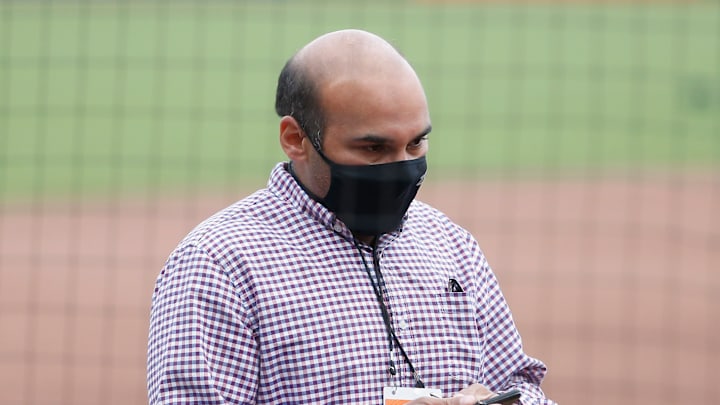Why Did Randy Rodriguez Got Protected?
The core of the Rule 5 draft is to try to get unprotected players from another roster with the hopes of them making an impact on the big league roster for next season. Typically, most teams lean on selecting relievers who will be given a shot in a bullpen with the hopes of them sticking around like what the Red Sox got with Garrett Whitlock in last year's Rule 5. There are times where teams will pick a position player in Rule 5 but it is not as common as pitchers as there is a higher shot of success than hitters. Also, signing a position player with big league experience in free agency as opposed to drafting a position player who never had any big league experience at all is an easier decision to make for front offices.
When handing out tool grades, a trend that you will typically notice is that scouts and evaluators will hand out present grades that are above-average or plus to a certain pitch type to a pitcher in the low-Minors but it is highly uncommon to see even average hit tool grades to Minor League hitting prospects unless they are prodigal hitters like Vladimir Guerrero, Jr. or Wander Franco. Even though there is a saying that hitters hit, the truth is you never know for most hitters if they really will hit unless they face legitimate big-league pitchers. For pitchers, however, it's much easier to get a good beat of them mainly because of technology. Do you like a pitcher in the low-Minors who has a great fastball and breaking ball characteristics that also throws enough strikes to save their life? Pop them in Rule 5.
So why did Rodriguez get protected? For starters, Rodriguez has plus stuff. Standing at an even six foot and a bit heavier than the 166 pounds declared weight, Rodriguez can pump fastballs up to 98 MPH with plenty of late life. Rodriguez has plus athleticism on the mound with pronounced drop-and-drive elements in his delivery that has a lot of violence but help him generate a lightning-quick arm speed. His shorter height, his drop-and-drive delivery, and his low 3/4 release point give his fastball a flat approach plane, and his plus stride length adds a tick more perceived velocity. To complement his plus heater is his slider which is one of the, if not the best, breaking balls in the farm system. It has a hard and tight two-plane break that he can execute in any quadrant of the zone. Rodriguez has the confidence to throw any of those two pitches in any count against any hitter regardless of handedness, and he can fill the zone and flash execution with both.
Rodriguez got chosen to be protected because of several factors. First is the pitchers vs. hitters conundrum that are a staple in the Rule 5 draft. Even though the Giants missed a chance in terms of protecting a hitter like Rincones, it looks like the Giants do have a plan of filling out the outfield with big-league talent in free agency once business re-opens. It does open up a massive opportunity for teams to take a shot at him who is a legitimate Top 30 talent but it is highly likely that an American League team will try to snatch him up because Rincones is a bit of a liability in the outfield with his lack of range and I view him primarily as a DH. Bypassing David Villar is also intriguing but unlike Rincones, Villar can actually provide defense in a big-league roster but there is a high possibility that the strikeout issues that plagued him throughout his Minors career could pop up once again.
That brings us to Seth Corry and Prelander Berroa. I think that bypassing Corry is an easy call as his command regressed to well below-average this season. Even though the Giants gave him a bit of a breather in the Arizona backfields to regroup and tinker the issues spotted with his mechanics that helped him finish strong with a positive note, he was out of whack once again in the Fall League. It has been proven that even though Corry's athleticism is an asset, his mechanics are probably too high-maintenance to ever imagine him throwing for consistent strikes in the future, and once picked, there is a high chance that he will be returned back to the Giants in the early-season as a waste of a Rule 5 pick because he is definitely not ready to contribute in the big leagues.
The selection over Berroa is more intriguing as there was a point in the season where Berroa looked like the best pitcher in the system in the month of July. However, when comparing their stuff, even though Rodriguez is a tick below Berroa in terms of fastball velocity (Berroa can reach up to 99 MPH while Rodriguez can reach up to 98 MPH), Rodriguez currently has the better breaking ball out of the two (Rodriguez has a plus slider while Berroa only has a slider that flashes average). Rodriguez also has a better feel for his utilizing his slider (he can work it up and down the zone while Berroa mostly works it up in the zone) while also having a similar fastball feel. Simply put, Rodriguez is more ready to step in a big-league role right now compared to both Berroa and Corry.
